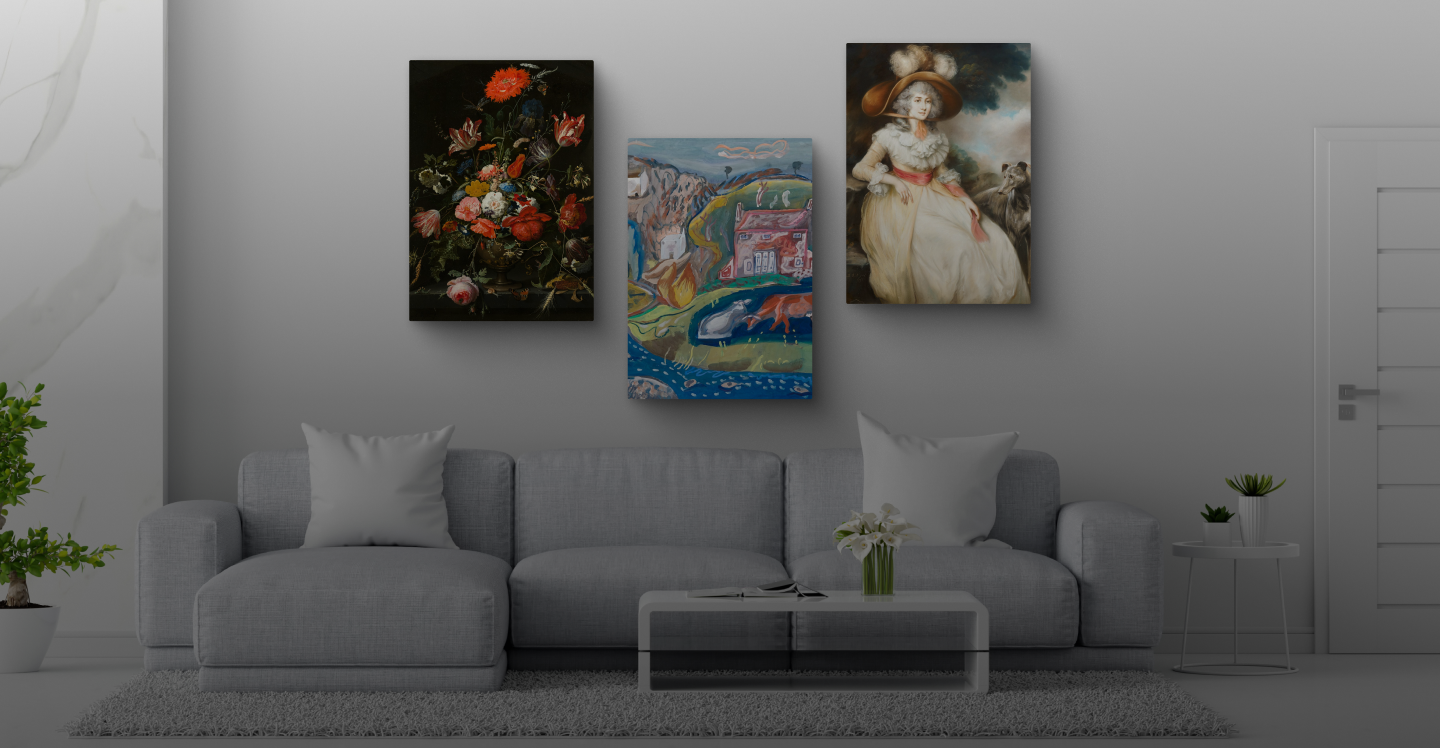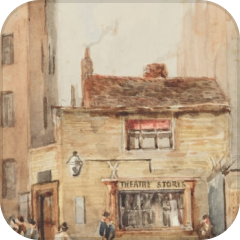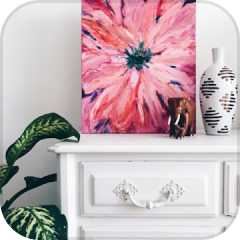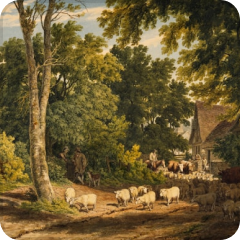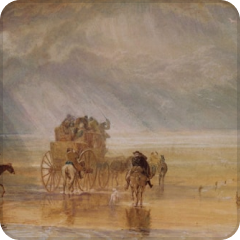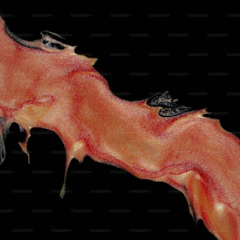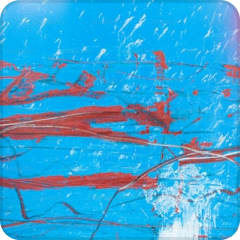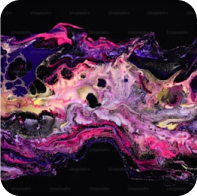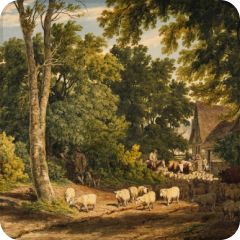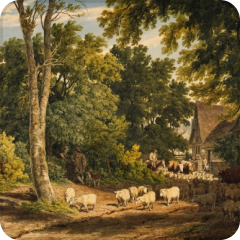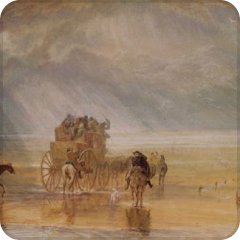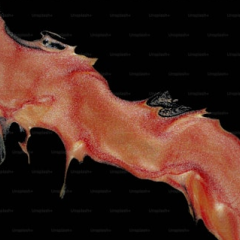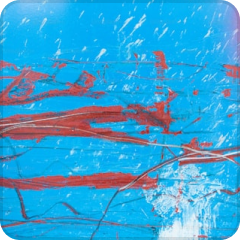





Top Categories
Transform Your Space with Personalized Art Prints
Bring your walls to life with premium, customizable canvas prints. Whether it’s your favorite memories or inspiring art, Zebaco makes it easy to create beautiful, durable pieces that reflect your style.

High-Quality Prints

Affordable Custom Art

100% Satisfaction
What’s On Sale
What Our Customers are Saying


Oliver Stone
"I recently purchased a stunning canvas from Zebaco, and I couldn't be happier with my choice! The vibrant colors and exquisite detail have truly transformed my living room. “


Amelia Rivers
"I recently purchased a stunning canvas from Zebaco, and I couldn't be happier with my choice! The vibrant colors and exquisite detail have truly transformed my living room. “


Ethan Hawke
"I recently purchased a stunning canvas from Zebaco, and I couldn't be happier with my choice! The vibrant colors and exquisite detail have truly transformed my living room. “


Sophia Bennett
"I recently purchased a stunning canvas from Zebaco, and I couldn't be happier with my choice! The vibrant colors and exquisite detail have truly transformed my living room. “


Sophia Bennett
"I recently purchased a stunning canvas from Zebaco, and I couldn't be happier with my choice! The vibrant colors and exquisite detail have truly transformed my living room. “
Revitalize Your Recollections: The Complete Manual for Cheap Canvas Photo Prints
In our contemporary era dominated by digital imagery, countless photographs remain imprisoned within electronic devices, never experiencing the tactile pleasure of physical manifestation. Among the most compelling methods to liberate these treasured moments involves transforming them into canvas photographic reproductions. These remarkable creations transcend mere photographic displays, evolving into sophisticated artistic statements that simultaneously preserve precious memories while elevating interior aesthetics.
Understanding Canvas Photographic Reproductions
Canvas photographic reproductions represent a revolutionary printing methodology wherein digital images undergo transformation onto premium textile substrates, subsequently mounted upon rigid frameworks. This process generates a distinctive textural quality reminiscent of classical paintings, creating an extraordinary fusion between contemporary photography and traditional artistic expression.
The fundamental process involves sophisticated printing mechanisms that deposit specialized inks onto canvas materials, ensuring exceptional color reproduction and remarkable longevity. Unlike conventional photographic papers, canvas substrates possess inherent durability characteristics that resist environmental degradation while maintaining visual integrity across extended timeframes.
Exceptional Advantages of Canvas Photographic Displays
Canvas reproductions demonstrate extraordinary resistance to environmental factors that typically compromise traditional photographs. The robust textile foundation, combined with advanced printing methodologies, creates displays capable of withstanding humidity fluctuations, temperature variations, and normal household conditions without experiencing significant deterioration.
These prints maintain their chromatic vibrancy for decades, unlike paper photographs that frequently succumb to yellowing, fading, or brittleness. The inherent strength of canvas materials provides protection against accidental damage, tears, or surface scratches that might permanently compromise conventional prints.
Aesthetic Sophistication and Visual Impact
The distinctive texture inherent in canvas materials imparts an unmistakable artistic character to photographic reproductions. This textural quality creates visual depth and dimensional complexity that transforms ordinary photographs into sophisticated artistic presentations. The absence of reflective surfaces eliminates glare issues, ensuring optimal viewing experiences regardless of lighting conditions or viewing angles.
Canvas reproductions possess an inherent elegance that elevates the perceived value and artistic merit of displayed imagery. Visitors often mistake high-quality canvas prints for original paintings, testament to their sophisticated appearance and professional presentation.
Flexible Display Possibilities
Canvas prints offer unprecedented versatility in presentation methods. These lightweight yet sturdy displays accommodate various hanging systems, from traditional picture rails to contemporary mounting hardware. Their dimensional stability allows for creative arrangement possibilities, including clustered gallery configurations or standalone focal presentations.
The absence of protective glass eliminates safety concerns associated with traditional framed artwork while reducing overall weight and installation complexity. This characteristic makes canvas prints particularly suitable for high-traffic areas, children's spaces, or locations where glass breakage might pose risks.
Personalization and Individual Expression
Modern canvas printing services provide extensive customization possibilities, allowing consumers to specify dimensions, proportions, edge treatments, and finishing details. This flexibility enables the creation of truly personalized artwork that reflects individual preferences and complements specific interior design schemes.
Edge wrapping options range from gallery-style extensions of the image around frame edges to solid color borders or decorative patterns. These choices influence the final appearance and can dramatically alter the visual impact of the finished piece.
Achieving Optimal Canvas Reproduction Results
Successful canvas reproduction begins with appropriate source material selection. High-resolution digital files provide the foundation for sharp, detailed prints that maintain clarity when enlarged to canvas dimensions. Images captured at insufficient resolution will exhibit pixelation, softness, or other quality compromises when transferred to canvas substrates.
Modern digital cameras and smartphones typically produce adequate resolution for canvas printing, though older devices or heavily compressed files may require careful evaluation. Professional photographers recommend minimum resolutions of 300 pixels per inch for optimal results, though specific requirements vary based on intended display size and viewing distance.
Dimensional Planning and Spatial Integration
Successful canvas displays require thoughtful consideration of available wall space and surrounding environmental elements. Oversized prints can overwhelm smaller rooms, while diminutive canvases may appear insignificant in expansive spaces. Measuring available wall areas and considering furniture placement ensures harmonious integration of canvas displays within existing interior arrangements.
Multiple canvas arrangements demand careful spacing calculations to achieve balanced, visually pleasing compositions. Professional interior designers frequently recommend specific spacing ratios between grouped displays to optimize visual cohesion and prevent overcrowding.
Compositional Enhancement and Visual Preparation for Canvas Prints
Transforming a digital photograph into a striking canvas print requires far more than simply enlarging the image and sending it to production. Canvas, as a medium, has unique textural qualities and printing characteristics that respond differently to photographic detail, tonal gradation, and spatial arrangement than paper or digital screens. To achieve exceptional results, photographers and designers must evaluate image composition, refine visual elements, and prepare files with meticulous attention to both artistic and technical factors. Proper preparation ensures that every print resonates with depth, clarity, and emotional impact while maintaining the creator’s intended aesthetic vision.
Images intended for canvas display must communicate visual strength through well-defined focal points, harmonious element distribution, and a balanced interplay between light and shadow. When these compositional fundamentals are weak, the printed result often feels flat, cluttered, or uninspiring. Addressing these issues through strategic editing, color calibration, and tonal refinement dramatically improves how an image translates to canvas, turning a good photograph into an extraordinary work of wall art.
Importance of Compositional Refinement Before Printing
Strong composition is essential because the scale and texture of canvas printing naturally emphasize both the strengths and weaknesses of an image. Unlike glossy photographic prints, which can mask minor flaws with reflective sheen, canvas absorbs light in a way that highlights spatial relationships and overall design. Photographs with clear subject focus, dynamic leading lines, and proportional element placement are more visually compelling when enlarged. Conversely, crowded scenes, poorly framed subjects, or uneven horizon lines become even more apparent once printed on a tactile surface.
Photographers should evaluate whether their images communicate a clear visual hierarchy. Does the eye naturally flow to the subject without being distracted by extraneous detail? Are compositional principles such as symmetry, rule of thirds, or golden ratio applied effectively? If not, cropping and selective editing can remove competing elements, simplify visual storytelling, and create a more cohesive presentation. Such refinements give the final canvas print a polished, professional quality that immediately draws viewers into the frame.
Role of Color Correction and Tonal Adjustments
Color reproduction on canvas behaves differently than on traditional photographic paper or high-resolution screens. The absorbent nature of the substrate slightly softens fine details and mutes overly bright colors, making precise color correction crucial. Adjustments to white balance, contrast, and saturation ensure that the printed image retains its intended vibrancy without appearing oversaturated or washed out. Proper tonal control is especially critical for portraits, landscapes, and fine art photographs, where subtle gradations define mood and atmosphere.
Brightness optimization is equally important. An image that appears luminous on a backlit display may print darker on canvas if left uncorrected. Professional editing tools allow photographers to calibrate exposure levels for print rather than screen viewing, ensuring shadow detail remains visible while highlights avoid blowing out. By mastering tonal refinement, creators achieve predictable, consistent results and avoid unpleasant surprises when their work transitions from digital file to physical artwork.
Professional Editing Techniques for Canvas Reproduction
Sophisticated editing software empowers photographers to refine images specifically for the nuances of canvas printing. Adjustments to saturation, sharpness, and local contrast can compensate for the slight diffusion caused by the woven texture of the canvas. Sharpening, in particular, must be applied judiciously—too little and the image appears soft; too much and it risks creating halos or exaggerated edges that detract from the overall quality.
Selective enhancements, such as localized dodging and burning, can guide viewer attention toward key elements while adding dimensional depth. Color grading techniques allow photographers to shape the emotional tone of the artwork, whether aiming for warm, inviting hues or cool, contemporary palettes. Understanding how these edits translate onto physical media allows for greater creative control and more satisfying results, especially when combined with calibrated monitors and proofing systems that replicate final print conditions.
Cropping Strategies and Aspect Ratio Considerations
Cropping decisions are among the most significant compositional adjustments when preparing photographs for canvas printing. Adapting an image to square or panoramic formats requires thoughtful consideration of subject placement, leading lines, and visual balance. An image tightly framed for a rectangular orientation may lose critical context when cropped to fit a different aspect ratio, potentially undermining its impact.
Careful planning ensures that important elements are not truncated near the edges or stretched awkwardly during resizing. In portraiture, maintaining appropriate headroom and body proportions is essential, while in landscapes, preserving horizon balance prevents awkward framing. By evaluating cropping options early, photographers avoid last-minute compromises that diminish the artistic integrity of the piece. When executed with precision, cropping enhances compositional strength and aligns the artwork perfectly with the intended display dimensions.
File Preparation and Technical Optimization
High-resolution image files are indispensable for producing large-format canvas prints that exhibit crisp detail and smooth tonal transitions. Photographers must verify that their digital files meet or exceed the recommended pixel dimensions for the intended print size. Upscaling low-resolution images introduces artifacts and visible pixelation that the textured canvas surface cannot disguise. Using non-destructive editing techniques preserves maximum image quality throughout the adjustment process.
Color management also plays a critical role. Employing ICC profiles tailored to the printer and substrate ensures color accuracy by compensating for how specific inks interact with the canvas material. Calibrating monitors to industry standards eliminates discrepancies between on-screen appearance and printed output. By combining technical optimization with artistic refinement, creators produce files that faithfully reproduce their vision with predictable precision.
Integrating Artistic Vision with Scientific Precision
Canvas printing represents a convergence of creative artistry and technical expertise. While the aesthetic qualities of an image—composition, lighting, and emotional resonance—form its foundation, scientific preparation guarantees its successful translation into physical form. Photographers who master both dimensions of this process produce artworks that transcend decorative function to become true visual statements.
By refining composition, controlling color and tone, applying advanced editing techniques, and preparing files with meticulous care, photographers ensure that each print communicates exactly as intended. Canvas substrates reward such diligence with a distinctive tactile presence, offering depth, warmth, and authenticity unmatched by other mediums. When artistic vision aligns with technical preparation, the resulting wall art captivates viewers, enhances interior spaces, and endures as a testament to both craftsmanship and creative excellence.
Innovative Creative Implementations in Canvas Print Presentation
Canvas prints have emerged as a versatile and enduring medium for presenting photography, artwork, and visual narratives in premium formats. Their textured surface, archival quality, and aesthetic adaptability make them highly sought-after for transforming personal photographs into timeless wall art. Beyond their decorative appeal, canvas prints also serve as powerful storytelling devices, enabling the preservation of travel experiences, cultural moments, and creative vision with exceptional visual depth. When properly curated, these prints do not merely decorate walls but create an immersive environment that embodies emotion, memory, and artistry.
The transformation of digital images into tactile, gallery-grade reproductions elevates visual material to a new standard of authenticity. Whether used in homes, commercial spaces, or professional exhibitions, the combination of high-definition printing and premium substrates provides enduring clarity, vibrancy, and emotional resonance. Creative implementations are only limited by imagination, as canvas displays can unify entire interiors, commemorate milestones, or function as dynamic personal archives.
Travel Memories and Visual Storytelling
One of the most compelling applications of canvas prints lies in preserving travel experiences with striking realism and permanence. Rather than allowing treasured images to remain buried within digital archives, carefully selected photographs can be transformed into captivating visual narratives. Landscapes of mountain ranges, desert vistas, and ocean horizons gain tangible dimension when reproduced on richly textured surfaces, allowing every atmospheric detail to shine through.
Creating thematic travel collections offers an immersive experience, turning ordinary living spaces into personal galleries of adventure. For example, a series of canvas prints from a single destination can chronicle the essence of a journey, from sunrise panoramas to twilight cityscapes. These curated groupings not only preserve memories but also offer conversation pieces that reflect personal taste, wanderlust, and cultural appreciation.
The ability of canvas substrates to accentuate natural light variations, subtle gradients, and minute details makes them ideal for showcasing topographical features and environmental textures. Whether highlighting the crystalline blues of a tropical sea or the rugged tones of alpine terrain, the medium enhances both chromatic range and atmospheric depth, ensuring viewers feel fully immersed in the captured scene.
Cultural Preservation Through Premium Displays
Canvas prints also serve as dignified vessels for preserving cultural heritage, family traditions, and significant community events. By presenting these moments in gallery-quality formats, they transcend the realm of simple documentation and enter a space of reverence and artistic respect. Ceremonial gatherings, heritage festivals, and landmark celebrations acquire additional gravitas when displayed prominently as large-scale prints.
In many cultures, visual storytelling holds profound significance, and transforming such imagery into tangible wall art ensures that these legacies remain vibrant for future generations. Unlike digital files that can be easily misplaced or forgotten, archival-quality prints maintain visible permanence. This preservation is particularly meaningful for families seeking to honor ancestry, cultural identity, and shared rituals.
Professional printing methods accommodate a range of tonal subtleties, allowing delicate fabrics, traditional attire, and ceremonial details to retain their richness. From intricate beadwork to elaborate architectural motifs, every cultural artifact is represented with clarity and precision, affirming the enduring value of these visual narratives.
Celebratory and Commemorative Masterpieces
Life milestones deserve preservation in formats that communicate both emotional depth and aesthetic sophistication. Weddings, anniversaries, graduations, and other landmark occasions gain new life when memorialized as canvas reproductions. These artworks transcend decorative purpose by becoming living reminders of cherished moments, embodying joy, unity, and personal history.
Canvas collections can be displayed as focal installations in homes, often occupying prominent walls where they act as visual anchors for family storytelling. By combining different sizes, shapes, and orientations, designers can craft gallery-style arrangements that enhance spatial harmony while emphasizing the chronology of life events.
Seasonal traditions and holiday gatherings may also be documented using rotating collections. This dynamic approach allows households to refresh displays throughout the year, cultivating a sense of continuity and anticipation. Instead of relying on static décor, these curated arrangements celebrate the passage of time while underscoring the evolving nature of personal and family narratives.
Artistic and Experimental Photography Applications
For artists and photographers, canvas prints offer a prestigious platform to present creative work with professional credibility. Abstract compositions, avant-garde studies, and architectural photography achieve enhanced impact when reproduced on archival substrates. The textural quality of the medium adds dimension and presence, reinforcing the conceptual integrity of each piece.
The physical depth created by pigment interacting with a woven surface subtly alters the viewer’s perception, creating a tactile connection that standard photographic papers cannot replicate. This is particularly beneficial for experimental and mixed-media photography, where subtle gradations, tonal shifts, and micro-details define the character of the image.
Architectural subjects benefit from the structural depth provided by canvas, as geometric forms, urban skylines, and interior perspectives achieve heightened spatial clarity. Similarly, abstract designs gain a painterly richness, bridging the gap between photographic realism and fine-art expression.
Portraiture and Human Expression on Canvas
Portrait photography acquires unique character and gravitas when presented as high-quality canvas prints. The surface texture enhances tonal variation, imparting warmth and vitality to skin tones while deepening shadows for added dimension. From intimate family portraits to formal headshots, this medium provides unmatched sophistication.
Professional photographers appreciate the ability of archival-grade pigment printing to reproduce subtle gradations in color, highlight delicate expressions, and maintain true-to-life accuracy. The result is a visual presentation that feels authentic, personal, and timeless. Canvas prints can also soften harsh lighting or digital sharpness, producing an organic, painterly effect that resonates with viewers.
When displayed in homes, offices, or galleries, portraits on canvas not only decorate the space but also establish emotional connections. A well-produced portrait becomes both art object and personal artifact, affirming identity and memory in physical form.
Designing Cohesive Interiors with Canvas Collections
Beyond individual prints, carefully curated canvas arrangements can transform interiors into harmonious visual environments. By integrating size variation, thematic consistency, and spatial awareness, these displays elevate the aesthetic appeal of any setting. Coordinated layouts—such as symmetrical triptychs or staggered collages—offer structure, while eclectic groupings provide organic charm.
Color harmonization plays a crucial role in unifying multiple prints within the same space. The ability to customize pigment profiles ensures that tones complement surrounding furnishings and wall finishes. This adaptability makes canvas art suitable for contemporary lofts, traditional residences, boutique hotels, and high-end commercial spaces alike.
By thoughtfully combining travel imagery, cultural documentation, portraiture, and fine art within a single cohesive arrangement, interior designers and homeowners can create spaces that are deeply personal yet universally compelling. The medium’s durability and timeless quality ensure these visual compositions retain their allure for decades.
Natural World and Wildlife Documentation
Nature photography achieves remarkable authenticity when reproduced on canvas, as the organic surface harmonizes with natural subjects. Wildlife photography, landscapes, botanical imagery, and environmental studies achieve enhanced resonance on canvas substrates, creating vivid visual experiences that feel tangible and alive. Canvas printing heightens the emotional connection between viewers and the natural world by emphasizing depth, tonal richness, and texture. Images of birds in flight, mammals in motion, or marine life beneath the surface gain a dynamic presence that traditional paper prints often fail to replicate. The woven structure of the canvas captures subtle gradients and micro-details in feathers, fur, and foliage, allowing these photographs to transcend simple decoration and become immersive visual narratives.
Macro photography, particularly when depicting insects, flowers, and fine natural elements, benefits tremendously from the enlarged scale that canvas reproduction makes possible. A butterfly’s delicate wing patterns, a dragonfly’s iridescent structure, or the veining on a single leaf appear with astonishing clarity. This level of magnification not only captivates art enthusiasts but also serves academic and educational purposes, providing visual tools for classrooms, museums, and scientific documentation. Large-scale nature prints also create restorative, calming environments in homes, offices, and healthcare spaces by drawing people closer to the serenity and complexity of ecosystems.
Artistic Depth and Display Adaptation
Adapting nature and wildlife photography for canvas requires careful consideration of image composition, color balance, and intended viewing distance. Vibrant greens of forests, deep blues of oceans, and earthy tones of deserts respond differently to canvas textures than to glossy photographic papers. Canvas absorbs light rather than reflecting it, giving natural scenes a painterly quality that feels timeless and enduring. Photographers often adjust saturation and contrast to ensure that foliage, skies, and animal subjects retain visual vitality without appearing artificial.
Display locations also play a critical role in maximizing impact. Large wildlife portraits placed in spacious living areas create a focal point that celebrates biodiversity and inspires environmental appreciation. Panoramic landscapes in offices or reception areas provide visual depth and convey a connection to nature, subtly improving mood and productivity. Whether used for interior design or educational exhibitions, these images provide both aesthetic value and meaningful storytelling, reinforcing ecological awareness through refined presentation.
Maintenance and Preservation Strategies
Canvas prints depicting natural subjects deserve protection to maintain their clarity, color, and structural integrity over time. One of the most significant preservation measures involves controlling exposure to sunlight. Ultraviolet radiation can fade pigments and distort tonal accuracy, diminishing the visual impact of meticulously captured wildlife or landscape scenes. Positioning prints away from direct sunlight or using UV-filtered window treatments helps prevent premature degradation. Indirect lighting offers balanced illumination that reveals detail while safeguarding the artwork’s long-term vibrancy.
Temperature and humidity stability are equally important. Canvas materials, often cotton or polyester blends, naturally expand and contract with environmental fluctuations. Excessive dryness can tighten the canvas and strain mounting structures, while high humidity encourages warping, sagging, or even microbial growth. Climate-controlled environments provide optimal protection, ensuring that both the canvas and the inks maintain their original properties.
Cleaning and Surface Maintenance
Preserving the tactile beauty of canvas surfaces requires delicate, non-invasive cleaning methods. Dust accumulation, airborne pollutants, and pet hair can dull the print’s brilliance and obscure intricate details. Regular light cleaning with soft, dry microfiber cloths gently removes surface debris without abrading the textured weave. For deeper maintenance, compressed air can dislodge dust from recessed areas, particularly in textured or high-relief sections of the print, without requiring direct physical contact.
Avoiding water or harsh cleaning agents is essential. Liquids can seep into the canvas fibers, causing staining, swelling, or pigment disruption. Similarly, household cleaners containing solvents or abrasives can permanently damage the printed surface. When significant cleaning is necessary, professional art conservators or specialists in fine art reproduction offer advanced techniques such as dry-surface treatments and protective sealing applications to ensure that high-value prints remain pristine.
Storage and Handling Protocols
Proper handling during relocation or storage prevents accidental harm to natural world and wildlife canvas prints. Supporting prints by their stretcher bars or frames rather than touching printed areas avoids oil transfer from fingers, which can attract dust or leave subtle marks on delicate surfaces. During transport or temporary storage, protective coverings such as acid-free paper or breathable fabric sleeves shield the artwork from scratches and contamination.
Storing canvas prints in controlled environments prevents damage from extreme temperatures or moisture. Basements and attics, which typically experience wide environmental fluctuations, are unsuitable for preserving photographic reproductions. Instead, moderate and stable conditions prevent warping, frame separation, and pigment deterioration. For seasonal displays, such as rotating nature-themed collections aligned with spring blossoms or autumn foliage, storing unused pieces properly ensures that each print remains gallery-ready when reintroduced.
Economic Considerations and Value Proposition
Canvas prints represent exceptional value propositions compared to traditional framing methods. The integrated mounting system eliminates separate frame purchases while providing immediate display readiness. Bulk ordering options and promotional pricing make canvas prints increasingly affordable for extensive display projects.
Long-term cost analysis reveals canvas prints' superior value retention compared to paper photographs requiring periodic replacement due to fading or damage. The extended lifespan and durability of canvas prints justify initial investment through years of continued enjoyment.
Investment in Quality and Craftsmanship
Premium canvas materials and professional printing services represent worthwhile investments in preserving precious memories. The difference between economy and professional-grade options becomes apparent in color accuracy, longevity, and overall presentation quality. Investing in superior materials and printing processes ensures satisfaction with long-term results.
Cheap canvas photo & picture prints can still maintain quality standards when sourced from reputable providers offering competitive pricing without compromising essential quality characteristics. Research and comparison shopping enable consumers to locate excellent value propositions within budget constraints.
Aesthetic Integration and Interior Design Harmony
Successful canvas display requires consideration of existing color schemes and decorative elements within target spaces. Coordinating canvas imagery with room colors creates cohesive visual experiences that enhance rather than compete with surrounding design elements. Neutral canvas selections provide versatility across changing decorative schemes.
Seasonal rotation of canvas displays allows for dynamic interior refreshment without permanent commitments to specific color palettes or themes. This approach maximizes the utility of canvas collections while preventing visual stagnation in living spaces.
Scale and Proportion Relationships
Proper scaling ensures canvas displays complement rather than overwhelm their environments. Large statement pieces require adequate wall space and viewing distances to achieve optimal visual impact. Conversely, smaller canvas groupings can create intimate focal points in cozy spaces.
Proportional relationships between canvas dimensions and surrounding furniture influence perceived balance and harmony. Professional interior designers recommend specific ratios between artwork dimensions and supporting furniture to achieve visually pleasing arrangements.
Lighting Considerations and Enhancement
Appropriate lighting dramatically influences canvas display effectiveness. Accent lighting can highlight specific prints while creating dramatic visual effects. Track lighting, picture lights, or strategically placed lamps enhance canvas presentations without creating glare or hot spots.
Natural lighting conditions throughout the day affect canvas appearance, with morning and evening light creating different moods and visual impressions. Understanding these variations allows for strategic placement that maximizes visual impact during preferred viewing times.
Specialized Printing Processes and Material Science
Modern canvas materials encompass various textile compositions, each offering distinct characteristics affecting final print appearance and longevity. Cotton blends provide excellent ink absorption and color reproduction, while synthetic materials offer enhanced durability and moisture resistance.
Texture variations range from smooth, fine-weave surfaces ideal for detailed imagery to coarse textures that emphasize artistic character. Understanding these differences enables informed material selection based on specific image characteristics and intended display environments.
Ink Formulations and Color Science
Contemporary printing utilizes advanced ink formulations specifically designed for canvas substrates. Pigment-based inks offer superior lightfastness and color stability compared to dye-based alternatives. Understanding ink characteristics helps predict long-term color performance and maintenance requirements.
Color gamut capabilities vary between printing systems, affecting the range of reproducible colors and tonal gradations. Professional printing services typically utilize expanded color gamuts that capture subtle color variations often lost in consumer-grade printing processes.
Mounting and Structural Engineering
Frame construction and mounting methods significantly influence canvas print longevity and appearance. Kiln-dried lumber provides dimensional stability while preventing warping and structural deterioration. Proper tensioning during mounting ensures smooth, wrinkle-free surfaces that maintain professional appearance over time.
Corner reinforcement and edge protection prevent common failure points that can compromise canvas integrity. Professional mounting includes considerations for thermal expansion and humidity-related dimensional changes that affect long-term structural stability.
Market Analysis and Consumer Trends
Contemporary consumers increasingly value personalized home decoration that reflects individual experiences and relationships. Canvas prints satisfy this desire while offering affordable alternatives to original artwork or expensive framing solutions. Millennial and Generation Z consumers particularly embrace canvas prints as meaningful gifts and personal expression vehicles.
Seasonal purchasing patterns reveal peak demand during holiday periods, wedding seasons, and gift-giving occasions. Understanding these trends enables consumers to anticipate pricing fluctuations and promotional opportunities that maximize value propositions.
Quality Assessment and Vendor Selection
Evaluating potential canvas printing providers requires consideration of multiple quality factors beyond pricing alone. Sample quality, customer reviews, guarantee policies, and shipping methods all influence final satisfaction levels. Reputable providers offer satisfaction guarantees and replacement policies that protect consumer investments.
Portfolio examination reveals provider capabilities and quality standards. Established providers typically showcase diverse examples demonstrating their range of capabilities and quality consistency across different image types and sizes.
Psychological Impact and Emotional Connections
Physical displays of meaningful imagery provide ongoing psychological benefits that digital storage cannot replicate. Regular visual exposure to positive memories reinforces emotional connections and contributes to overall well-being. Canvas prints facilitate these benefits through permanent, prominent display of cherished moments.
Research indicates that physical photograph displays encourage reminiscence and storytelling, particularly beneficial for older adults and families with children. Canvas prints serve as conversation starters that promote social interaction and memory sharing among family members and visitors.
Stress Reduction and Environmental Psychology
Familiar imagery displayed through canvas prints contributes to stress reduction and emotional comfort within living spaces. Photographs of natural scenes, beloved individuals, or peaceful moments provide psychological anchors that promote relaxation and positive emotional states.
The textural quality of canvas prints engages tactile senses in addition to visual perception, creating multi-sensory experiences that enhance emotional connections to displayed imagery. This sensory richness distinguishes canvas prints from digital displays or traditional photographs.
Cultural Significance and Social Implications
Canvas prints serve as powerful tools for preserving family heritage and cultural traditions. Historical photographs, ancestral portraits, and cultural celebrations gain dignity and permanence through canvas presentation. These displays create visual narratives that connect generations and preserve important cultural memories.
Immigration families often utilize canvas prints to maintain connections with homeland cultures while establishing new traditions in adopted countries. These displays bridge geographical and temporal distances, providing comfort and identity reinforcement for displaced communities.
Gift-Giving Traditions and Social Bonding
Personalized canvas prints represent thoughtful gifts that demonstrate consideration and emotional investment. Unlike generic presents, custom canvas prints require intimate knowledge of recipient preferences and meaningful shared experiences. This personal investment strengthens social bonds and creates lasting appreciation.
Wedding gifts, housewarming presents, and milestone celebrations benefit from the permanence and significance of custom canvas displays. Recipients often treasure these personalized gifts more than expensive but impersonal alternatives, creating positive associations that persist throughout the relationship.
Environmental Considerations and Sustainability
Environmentally conscious consumers can select canvas prints produced using sustainable materials and processes. Organic cotton substrates, water-based inks, and recycled frame materials minimize environmental impact while maintaining quality standards. These options appeal to consumers seeking to align purchasing decisions with environmental values.
Local printing services reduce transportation-related carbon footprints while supporting regional economies. Many local providers offer competitive pricing and personalized service that rivals national chains while providing environmental benefits.
Longevity and Waste Reduction
The extended lifespan of quality canvas prints reduces waste generation compared to frequently replaced paper photographs or digital displays requiring periodic hardware upgrades. This durability aligns with sustainable consumption principles that emphasize quality over quantity and longevity over disposability.
Proper care and maintenance extend canvas print lifespan even further, maximizing the environmental benefits of initial production investments. Repair and restoration services can address minor damage, preventing premature disposal of valuable displays.
Artistic Movements and Cultural Influences
Modern artistic movements increasingly embrace photographic media as legitimate artistic expression. Canvas prints allow amateur photographers to participate in these movements while creating gallery-quality displays of their creative work. This democratization of artistic presentation removes barriers between professional and amateur creative expression.
Street photography, documentary imagery, and conceptual photography gain credibility and visual impact through canvas presentation. The substantial physical presence of canvas prints commands attention and respect that digital displays often cannot achieve.
Historical Context and Evolutionary Perspectives
Canvas printing represents the latest evolution in humanity's ongoing quest to preserve and display meaningful imagery. From cave paintings to oil portraits to digital photography, each era has developed methods for creating lasting visual records. Canvas prints continue this tradition while incorporating contemporary materials and processes.
The convergence of traditional artistic presentation methods with modern photographic imagery creates unique cultural artifacts that reflect current aesthetic preferences and available resources. These hybrid creations represent distinctly contemporary expressions that future generations may recognize as characteristic of our era.
Sizing and Dimensional Considerations
Effective canvas sizing relies on mathematical relationships that create visually pleasing proportions relative to display environments. The golden ratio, rule of thirds, and other compositional principles influence optimal canvas dimensions for specific spaces and viewing distances.
Room size, ceiling height, and furniture scale all impact ideal canvas dimensions. Professional interior designers utilize specific calculation methods to determine appropriate artwork sizes that complement rather than compete with existing architectural and decorative elements.
Viewing Distance and Perceptual Psychology
Optimal viewing distances vary based on canvas size and image detail levels. Large canvas displays require greater viewing distances to appreciate overall composition, while smaller prints reward closer examination of fine details. Understanding these relationships enables strategic placement that maximizes visual impact.
Human perception research reveals specific distance-to-size ratios that optimize viewing experiences. These scientific principles guide professional display designers in creating museum and gallery presentations that can be adapted for residential environments.
Production Methods and Manufacturing Excellence
Contemporary canvas printing utilizes sophisticated digital printing systems capable of reproducing millions of colors with exceptional accuracy. Wide-format printers designed specifically for textile substrates ensure consistent quality across large canvas surfaces while maintaining fine detail reproduction.
Automated color management systems calibrate printing parameters to compensate for substrate characteristics and environmental variables. These systems ensure color consistency between digital files and physical prints while minimizing variations between production runs.
Quality Control and Inspection Procedures
Professional canvas printing operations implement comprehensive quality control measures throughout production processes. Visual inspection protocols identify potential defects before customer delivery, while automated systems monitor print quality parameters in real-time.
Color matching verification ensures printed outputs accurately represent intended imagery, while dimensional accuracy checks confirm proper sizing and mounting specifications. These quality assurance measures minimize returns and ensure customer satisfaction with final products.
Finishing Processes and Protective Treatments
Post-printing finishing processes significantly influence canvas print longevity and appearance. Protective coatings resist moisture, ultraviolet radiation, and atmospheric contaminants while maintaining surface texture and color vibrancy. These treatments represent worthwhile investments in long-term display quality.
Edge sealing prevents moisture infiltration and fraying while providing neat, professional appearances. Corner reinforcement addresses common stress points that might compromise structural integrity during handling or environmental changes.
Market Dynamics and Industry Landscape
The canvas printing industry encompasses diverse providers ranging from local specialty shops to international online services. Each segment offers distinct advantages, with local providers typically emphasizing personalized service and quick turnaround, while larger operations focus on competitive pricing and extensive customization options.
Service differentiation increasingly centers on quality guarantees, shipping options, customer support, and specialized capabilities like oversized printing or unusual substrates. Understanding these distinctions enables informed provider selection based on specific project requirements and priorities.
Pricing Structures and Value Optimization
Canvas print pricing varies significantly based on size, quantity, customization level, and provider capabilities. Understanding pricing structures enables consumers to optimize value through strategic ordering decisions, bulk purchases, or promotional timing.
Volume discounts reward larger orders, making canvas prints particularly attractive for extensive decoration projects or gift-giving occasions. Seasonal promotions and loyalty programs provide additional savings opportunities for regular customers.
Emerging Trends and Future Directions
Industry trends indicate growing consumer interest in sustainable production methods, expanded customization options, and integrated smart home compatibility. Augmented reality preview systems allow customers to visualize canvas displays within their actual living spaces before ordering.
Subscription services and automatic reprinting options cater to consumers seeking convenient updating of displayed imagery. These services particularly appeal to families with growing children or individuals who frequently travel and create new memorable photographs.
Installation Methodology and Hanging Systems
Proper installation begins with appropriate hardware selection based on canvas weight, wall construction, and intended permanence. Different wall materials require specific fastener types to ensure secure mounting without structural damage.
Stud location and wall condition assessment prevents installation failures that might damage both walls and canvas displays. Professional installation tools and techniques ensure level, secure mounting that withstands normal environmental stresses.
Arrangement Principles and Visual Composition
Multiple canvas arrangements require careful planning to achieve balanced, harmonious compositions. Symmetrical arrangements provide formal, structured appearances, while asymmetrical groupings create dynamic, contemporary effects. Understanding these principles enables creation of professional-looking displays.
Spacing calculations ensure adequate visual separation between individual pieces while maintaining overall composition unity. Consistent spacing creates order and sophistication, while varied spacing can introduce visual rhythm and interest.
Safety Considerations and Structural Integrity
Installation safety requires consideration of potential falling hazards, particularly in areas frequented by children or elderly individuals. Redundant mounting systems and safety cables provide additional security for valuable or large canvas displays.
Earthquake regions require specialized mounting systems designed to withstand seismic activity. Flexible mounting options accommodate building movement while maintaining display security and preventing damage during earth movement events.
Color Theory and Visual Perception
Understanding color theory principles enhances canvas print selection and arrangement decisions. Complementary color schemes create vibrant, energetic displays, while analogous palettes provide calming, harmonious effects. Monochromatic approaches emphasize texture and form over color contrast.
Color temperature considerations influence mood and atmosphere within display environments. Warm color palettes create inviting, cozy feelings, while cool palettes promote calm, serene environments. Understanding these psychological effects enables strategic color selection for specific space functions.
Cultural Color Associations and Symbolic Meanings
Different cultures associate specific colors with various emotions, occasions, and symbolic meanings. Understanding these associations prevents inadvertent cultural insensitivity while enabling purposeful symbolic communication through canvas display choices.
Personal color preferences and associations influence individual responses to canvas displays. Considering these subjective factors alongside objective design principles creates more satisfying and meaningful display experiences.
Historical Development and Evolutionary Context
Canvas painting traditions spanning centuries provide rich contextual backgrounds for contemporary photographic canvas prints. Understanding this heritage enhances appreciation for the medium while connecting modern practices with historical artistic movements.
Renaissance masters established many compositional and color principles that remain relevant for contemporary canvas displays. Their insights into proportion, lighting, and visual hierarchy continue to inform effective display design and image selection.
Industrial Revolution and Democratization
Industrial printing developments democratized artistic presentation, making high-quality reproductions accessible to broader populations. Canvas printing represents the latest chapter in this democratization, enabling ordinary individuals to create museum-quality displays of personal imagery.
Mass production capabilities reduce costs while maintaining quality standards, making premium presentation methods available to middle-class consumers previously excluded from such luxury options. This accessibility transforms canvas prints from luxury items into practical home decoration solutions.
Psychological Research and Emotional Impact Studies
Research demonstrates that visual memory cues provide significant cognitive benefits, particularly for aging populations and individuals experiencing memory challenges. Canvas displays of meaningful imagery serve as powerful memory triggers that support cognitive function and emotional well-being.
Alzheimer's and dementia research indicates that familiar imagery can provide comfort and orientation support for affected individuals. Canvas prints offer permanent, easily visible memory support that requires no special equipment or training to utilize effectively.
Social Psychology and Identity Formation
Personal imagery displays contribute to identity formation and self-concept development, particularly important for adolescents and young adults. Canvas prints provide tangible representation of achievements, relationships, and experiences that reinforce positive self-image and personal growth.
Family photography displays strengthen family bonds and create shared identity markers that unite household members around common experiences and values. These visual reminders promote family cohesion and cultural transmission across generations.
Global Perspectives and Cultural Variations
Cultural preferences for imagery, color, and display methods vary significantly across global markets. Understanding these variations enables creation of culturally appropriate displays that respect local aesthetic traditions while incorporating personal preferences.
Asian markets often prefer subtle, harmonious displays that complement rather than dominate living spaces, while Western preferences may embrace bold, statement-making presentations. These cultural differences influence optimal canvas selection and arrangement strategies.
Economic Development and Market Accessibility
Canvas printing accessibility varies significantly across global markets based on local economic conditions, infrastructure availability, and cultural priorities. Emerging markets increasingly embrace canvas prints as symbols of prosperity and cultural sophistication.
International shipping options make canvas prints accessible to global consumers, though shipping costs and customs considerations influence practical accessibility. Local production capabilities in developing markets continue expanding, improving affordability and availability.
Seasonal Considerations and Temporal Displays
Canvas prints provide excellent vehicles for seasonal decoration that transcends temporary holiday displays. Family celebration photography captures holiday traditions while creating lasting decorative elements that enhance seasonal ambiance year after year.
Rotating seasonal displays maintain visual interest while accommodating changing decorative themes throughout annual cycles. Storage and rotation systems enable practical management of extensive canvas collections tailored to specific seasons or occasions.
Anniversary and Memorial Commemorations
Significant anniversary dates and memorial occasions benefit from dedicated canvas displays that honor important relationships and memories. These permanent installations provide focal points for reflection and remembrance while integrating seamlessly into daily living environments.
Memorial canvas displays offer healing opportunities for grieving families while celebrating lives and relationships in positive, uplifting presentations. The permanence and dignity of canvas presentation provides comfort and meaningful tribute to departed loved ones.
Emerging Innovations and Future Possibilities
Emerging technologies enable canvas prints to incorporate digital connectivity while maintaining traditional aesthetic appeal. QR codes and NFC chips embedded in canvas frames can link physical displays to digital content, social media, or multimedia presentations.
Augmented reality applications allow viewers to access additional information, alternative views, or interactive content related to displayed imagery. These innovations bridge traditional and digital presentation methods while enhancing user engagement and educational value.
Sustainable Production Methods and Environmental Responsibility
Industry innovations focus increasingly on sustainable production methods that minimize environmental impact while maintaining quality standards. Water-based inks, renewable energy utilization, and waste reduction programs demonstrate industry commitment to environmental responsibility.
Recycling programs for canvas prints reaching end-of-life provide responsible disposal options while recovering valuable materials for reuse. These programs support circular economy principles while reducing waste generation from decorative display activities.
Professional Photography and Commercial Applications
Professional photographers increasingly recommend canvas prints for wedding and event documentation due to their elegance and longevity. Bridal displays, reception photography, and ceremony moments gain enhanced significance through canvas presentation while providing lasting keepsakes for couples and families.
Event planners utilize canvas prints for venue decoration, creating personalized environments that reflect celebration themes and honor special occasions. These applications demonstrate canvas prints' versatility beyond residential decoration into commercial and professional contexts.
Portrait Photography and Professional Presentation
Professional portrait photographers utilize canvas prints to showcase their work while providing clients with premium presentation options. The artistic quality of canvas presentation elevates portrait photography from simple documentation to sophisticated artistic expression.
Business professionals utilize canvas portrait displays in offices and professional environments to project success, sophistication, and attention to quality. These applications extend canvas print utility into professional branding and image management contexts.
Educational Applications and Learning Enhancement
Canvas prints support visual learning methodologies by providing permanent, easily accessible reference materials. Educational imagery presented on canvas offers advantages over digital displays through constant availability without power requirements or screen limitations.
Historical documentation, scientific imagery, and cultural representations gain educational value through prominent canvas display. These installations create immersive learning environments that support retention and comprehension while maintaining aesthetic appeal.
Artistic Instruction and Creative Development
Art instruction benefits from canvas print examples that demonstrate composition, color, and presentation principles. Students can examine professional examples while developing their own creative skills and aesthetic understanding.
Photography instruction utilizes canvas prints to demonstrate the potential of student work when presented professionally. This motivation encourages creative development while providing tangible goals for skill advancement and artistic achievement.
Commercial Interior Design and Professional Spaces
Professional environments benefit from carefully selected canvas displays that enhance atmosphere while maintaining workplace appropriateness. Abstract imagery, landscape photography, and cultural representations provide visual interest without controversial subject matter.
Lobby displays, conference room artwork, and executive office decoration demonstrate corporate sophistication while creating positive impressions for clients and visitors. Canvas prints offer cost-effective alternatives to original artwork while providing comparable visual impact and professional presentation.
Hospitality Industry Applications
Hotels, restaurants, and entertainment venues utilize canvas prints to create distinctive atmospheres that enhance customer experiences. Local imagery, cultural themes, and artistic photography contribute to memorable environments that encourage return visits and positive reviews.
Temporary exhibitions and rotating displays enable hospitality businesses to refresh environments regularly while controlling decoration costs. Canvas prints facilitate these changes through lightweight, damage-resistant displays that accommodate frequent handling and relocation.
Preservation Science and Archival Considerations
Archival canvas printing utilizes materials and processes specifically designed for extended preservation periods. Museum-quality standards ensure that important imagery receives appropriate treatment for potential historical significance while maintaining accessibility for daily enjoyment.
pH-neutral materials, lightfast inks, and protective treatments contribute to archival stability while preventing chemical degradation that compromises image integrity. These standards particularly benefit family historians and collectors seeking to preserve important visual records.
Conservation Methods and Restoration Possibilities
Professional conservation services can address damage or deterioration in valuable canvas prints through specialized restoration procedures. Understanding these possibilities provides peace of mind for significant investments while extending the useful life of important displays.
Preventive conservation measures minimize potential damage through environmental controls, protective treatments, and proper handling procedures. These approaches prove more cost-effective than remedial treatments while ensuring optimal long-term preservation.
Creative Photography Techniques for Canvas Display
Photographers can optimize their work specifically for canvas presentation through compositional choices that emphasize the medium's strengths. Strong geometric elements, bold color contrasts, and simplified backgrounds translate effectively to canvas substrates while maintaining visual impact.
Depth-of-field management creates layered compositions that benefit from canvas texture while directing viewer attention to important image elements. Understanding how canvas presentation affects perception enables photographers to make informed creative decisions during capture and editing phases.
Genre-Specific Considerations and Adaptations
Different photographic genres require distinct approaches for optimal canvas presentation. Portrait photography benefits from careful background selection and lighting choices that complement canvas texture, while landscape photography emphasizes natural elements that harmonize with organic substrate characteristics.
Macro photography gains dramatic impact through canvas enlargement, revealing details invisible in smaller formats while creating abstract compositions that function as decorative art. These applications demonstrate canvas prints' versatility across diverse photographic styles and subjects.
Consumer Behavior and Decision-Making Processes
Consumer research reveals multiple factors influencing canvas print purchase decisions, including price sensitivity, quality perceptions, customization options, and emotional connections to displayed imagery. Understanding these factors enables informed decisions that maximize satisfaction with final results.
Social media influence and peer recommendations significantly impact consumer choices, with visual platforms like Instagram and Pinterest driving awareness and adoption of canvas print trends. These digital influences shape contemporary aesthetic preferences and purchasing behaviors.
Satisfaction Metrics and Quality Evaluation
Customer satisfaction with canvas prints correlates strongly with realistic expectations and appropriate provider selection. Understanding quality variables and reasonable outcome expectations prevents disappointment while ensuring positive experiences with canvas print investments.
Return and exchange policies reflect provider confidence in quality standards while protecting consumer investments. Reputable providers typically offer satisfaction guarantees that demonstrate commitment to customer success and quality assurance.
Global Supply Chain and Manufacturing Networks
Global canvas printing capabilities enable access to specialized materials and production methods unavailable through local providers. International suppliers often offer competitive pricing through economies of scale while maintaining quality standards comparable to domestic alternatives.
Import considerations include shipping times, customs requirements, and potential damage risks associated with international transportation. Balancing these factors against cost savings and quality benefits requires careful evaluation of individual project requirements and priorities.
Supply Chain Resilience and Risk Management
Diversified supplier networks provide resilience against disruptions while ensuring consistent availability of canvas printing services. Understanding supply chain vulnerabilities enables proactive planning that prevents project delays or quality compromises.
Local backup options provide security against international shipping delays or quality issues while supporting regional economies and reducing environmental impact through shortened transportation distances.
Conclusion
Canvas photo prints represent a remarkable convergence of traditional artistic presentation methods with contemporary photographic imagery, creating opportunities for meaningful personal expression and sophisticated home decoration. The unique characteristics of canvas substrates—their texture, durability, and visual appeal—transform ordinary photographs into compelling artistic displays that enhance living environments while preserving precious memories.
The journey from digital image to finished canvas display involves numerous considerations, from initial image selection and editing through professional printing and proper installation. Understanding these processes enables consumers to make informed decisions that maximize satisfaction while avoiding common pitfalls that might compromise final results. The investment in quality materials and professional services pays dividends through years of continued enjoyment and visual impact.
Economic accessibility continues improving as production capabilities expand and competition increases among service providers. Cheap canvas photo & picture prints no longer require quality compromises, as efficient production methods and competitive markets drive down costs while maintaining professional standards. This democratization enables broader populations to enjoy premium presentation methods previously reserved for affluent consumers or professional artists.
The psychological and emotional benefits of physical photograph displays extend far beyond mere decoration, providing ongoing connections to meaningful memories and relationships. Canvas prints facilitate these benefits through permanent, prominent presentation that encourages regular interaction and reminiscence. The tactile quality and substantial presence of canvas displays create multi-sensory experiences that digital alternatives cannot replicate.
Environmental considerations increasingly influence consumer choices, with sustainable production methods and long-lasting displays appealing to environmentally conscious purchasers. The extended lifespan of quality canvas prints supports sustainable consumption principles while providing exceptional value propositions compared to frequently replaced alternatives.
Cultural significance and heritage preservation represent additional benefits of canvas print utilization, as these displays honor family history and cultural traditions while creating visual narratives that connect generations. The dignity and permanence of canvas presentation elevates ordinary family photographs to the status of important historical documents worthy of preservation and display.
Future innovations promise continued expansion of canvas print capabilities and applications, with smart home integration and augmented reality enhancements providing new opportunities for interactive and dynamic displays. These developments will likely strengthen the appeal of canvas prints while opening new markets and applications.
The ultimate value of canvas photo prints lies in their ability to transform intangible digital files into tangible, meaningful objects that enrich daily life experiences. They bridge the gap between our digital present and our human need for physical connections to important memories and relationships. Whether preserving family heritage, celebrating achievements, or simply enhancing living spaces with personal imagery, canvas prints provide lasting satisfaction that justifies their modest investment costs through years of continued pleasure and meaning.



